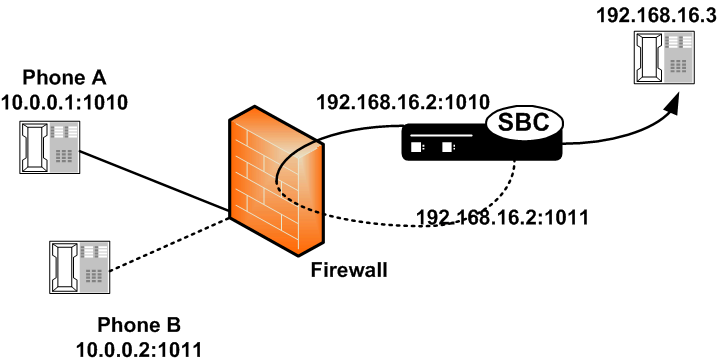Dynamic Deny for HNT
Dynamic deny for HNT has been implemented on the Oracle® Enterprise Session Border Controller for cases when callers are behind a NAT or firewall. Without this feature, if one caller behind a NAT or firewall were denied, the Oracle® Enterprise Session Border Controller would also deny all other users behind the same NAT or firewall. This would be true even for endpoints behind the firewall that had not crossed threshold limits you set for their realm; all endpoints behind the firewall would go out of service. In the following diagram, both Phone A and Phone B would be denied because their IP addresses would be translated by the firewall to the same IPv4 address (192.168.16.2).
However, dynamic deny for HNT allows the Oracle® Enterprise Session Border Controller to determine, based on the UDP/TCP port, which endpoints should be denied and which should be allowed. The Oracle® Enterprise Session Border Controller can determine that even though multiple endpoints originating behind a firewall appear with the same IPv4 address, those addresses use different ports and are unique.
As shown in the diagram below, the ports from Phone A and Phone B remain unchanged. This way, if Phone A violates the thresholds you have configured, the Oracle® Enterprise Session Border Controller can block traffic from Phone A while still accepting traffic from Phone B.




